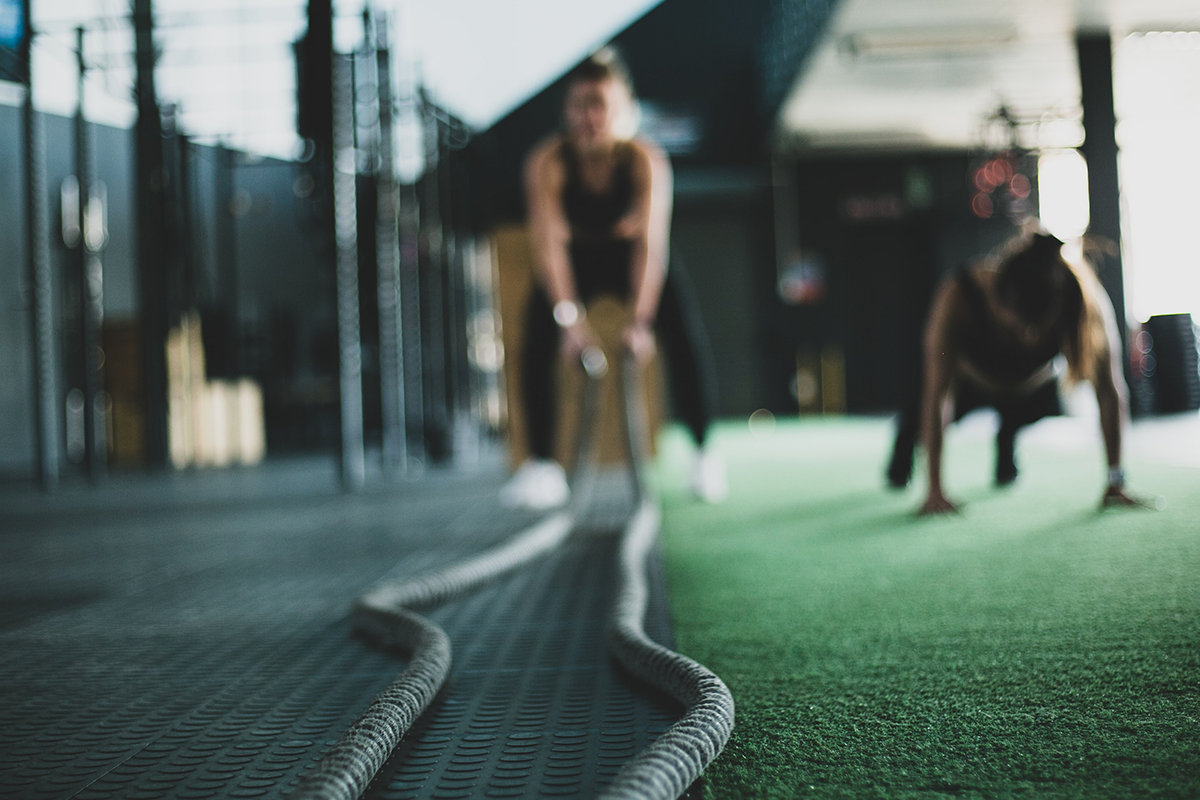5 Ways to Kickstart Your Gym Routine

With the transition into a new year, it can be a potent opportunity to commit yourself to new habits in support of your optimum wellness. Much like learning a new skill, new habits also have a learning curve necessary for proficiency. Creating a fitness routine is a common choice for a new year's resolution, as exercise is a pillar for reaching significant wellness.
We live in a time where there are many approaches to fitness, and the overwhelming amount of choices can stop people in their tracks! However, we’re here to help you narrow down the approach that works best for you. Exercise routines are not one-size-fits-all, and attempting to commit to one that isn’t ideal for your needs is a recipe for a flop. Use these five ways to kickstart your gym routine as a guide to find an exercise approach that helps you feel stronger, healthier, and motivated!
Perhaps the most challenging part of having a consistent gym routine is the initiation of exercise itself! Many people wait for motivation to hit, and only exercise then. Unfortunately, that is not ideal for creating a new habit. While the feeling of motivation can propel you into action, it’s uncommon to initially feel motivated when starting a new routine. Rather than waiting or hoping for that jolt of motivational energy, thoughtful methods can be used to build momentum for a consistent exercise routine.
First, you have to decide on the routine that you want. Allow the rest of this article to support you in finding out what is best for you! This could be a minimum of 20 minutes of movement everyday, or an alternating daily schedule of vigorous exercise and recovery-based movement. It’s important to choose something realistic for your schedule and experience level.
One effective approach for creating a new habit comes from none other than the renowned comedian Jerry Seinfeld! Seinfeld’s technique is a simple way to commit to a new habit, and stick to creating the momentum until it becomes automatic. All you need to do is buy (or if you feel creative, draw) a large calendar to put on the wall. Place this calendar somewhere visible, where it can’t be missed. After executing the designated habit - exercise, in this case - make a large mark on the square of the current day. For example, if you are deciding to exercise for 20 minutes each day, you could draw a large check mark on that day. Be sure to use something bold and visible for the mark! The visual of consistent marks symbolizing your commitment to a habit can catalyze enough excitement to keep going. This method provides a feeling of reward, as the satisfaction of the marker hitting the paper is a solid indicator that you did what you wanted to do.
Of course, days will be missed for various reasons. Negative self-talk around missing a day is unlikely to serve as motivation. Rather, the blank spot on the calendar can be a reminder to keep that habit going the next day. Eventually, you may find that the habit becomes more automatic, and the motivation to exercise hits on its own. At that point, the Seinfeld technique may not be necessary, but can still be a fun method of staying accountable. And it could feel good to have that symbol of self-accountability on display!
Depending on what resources are available, a gym routine doesn’t always have to involve a gym. Most gyms provide a complete repertoire of exercise equipment, but have the caveats of a monthly cost and occupied equipment. The ritual of going to a certain location to exercise is helpful for many in building a consistent routine, but that location does not have to be a fitness center.
If a gym is an accessible choice for you, finding a gym with many amenities will be ideal. Your average gym will have a large selection of weights, cardio equipment, and machines for focusing on certain muscles. They may also have saunas, hot tubs, and recovery equipment. Many gyms offer group classes and personal training, which are amazing ways to learn how to exercise and feed off the motivation of having others alongside you.
For those who prefer not to use a shared facility, choose a designated spot in your living space to exercise.. Even if it’s a certain corner of a room, dedicating one spot to your movement practice can inspire a similar experience to attending a fitness facility. While not entirely essential, owning equipment can be helpful. Resistance bands, kettlebells, and dumbbells can be enough for your home gym, if you’re just getting started. These items are typically not too cost prohibitive, and can sometimes easily be found secondhand on Craigslist.
Healthy exercise habits do not require equipment, however. Many people rely on their body alone for their fitness routine. If that is the approach you choose, then you can decide where your gym is! Your favorite park or backyard can be your fitness spot. For both home and outdoor fitness, a yoga mat can be a helpful tool for designating your area. The traction from the mat helps quite a bit if the surface beneath you isn’t ideal.
Choosing a fitness routine that best suits your needs may be the most imperative step in kickstarting your exercise journey! This is an area where assistance from others can be very helpful. While many exercises are easy to learn, movement with proper form is important for your own safety and optimum results. Consulting a fitness professional is ideal for finding a routine that can help you meet your goals, but there are plenty of other resources available. If you have a friend who already has a fitness practice, you may be surprised at how willing they are to share their routine with you!
The beginning of a fitness routine could be a stage of experimentation in figuring out what types of movement best serve you. Some people may thrive with heavy lifting, while others may feel best with dance-based fitness. Everyone’s body and goals are different; therefore, experimenting should be treated with a lot of grace. Committing to a form of movement that is boring or overall uncomfortable for you may not yield the best results.
If you’re new to exercise, consider trying out different approaches. YouTube is a wonderful and free resource filled with guided exercise videos and professionals sharing their beliefs on best practices. A period of study on different forms of exercise can help you to figure out which ones are best for you, before jumping right in.
Some common forms of exercise are yoga, high intensity interval training (HIIT), pilates, Zumba dancing, jogging, biking, and weightlifting. It’s likely that you’ll come across biased views on which form is “the best.” While certain types of exercise may yield more specific results, it can be far more helpful to have a somatic awareness of which form provides the best results for your body. One person may feel best after deadlifting 300lbs, while another may have better results from slow movement during a yoga session. Take some time to survey these different approaches, considering both your own goals and intuition toward what would work best for you.
Choosing one form of exercise to stick with may be supportive for some, but all of these fitness approaches can be mixed and matched! Don’t forget that a gym routine can be a lot of fun, and doesn’t have to be monotonous or forced. You’ll likely find more consistent motivation and better results if you enjoy what you’re doing. Lastly, consulting your physician before starting any sort of exercise routine is absolutely essential.
Rest and relaxation is vital in the journey toward building a stronger and healthier body. A common misconception around exercise is that you need to push as hard as possible for the best results. In reality, a period of recovery is usually essential after exercise sessions to provide optimum support. This can be as simple as taking off-days. Some people thrive off of exercising consistently for multiple days and then taking a few days off, while others do a daily alternation between exercise and recovery. This depends on your body, and the types of exercise that you’re doing. If you give yourself adequate time for recovery, your body will thank you.
In addition to rest days, there are a number of tools that support enhanced recovery. This includes using a dry sauna after exercising, cold exposure through ice baths or cold showers, and certain forms of stretching before and after exercise. Eating adequate amounts of protein is an important factor in recovery, as well. We recommend eating protein-rich foods after exercise sessions plus protein shakes when extra servings are needed.
Some additional soothing techniques include massage, epsom salt baths, and topical lotions. The warming & cooling sensation of Bluebird Botanicals Hemp Sport Lotion, which was designed specifically for athletes, may be a great choice! It is normal to feel sore after exercise, especially after beginning a new routine. These days of recovery allow for the body to come back to a balance after the strain of exercise. Don’t short yourself the opportunity to relax after working out, as it is of utmost importance in the journey of strengthening your body!
This final method of kickstarting your gym routine may not apply to everyone, but should be considered. Designating a certain goal can help you calibrate your efforts more directly. For example, if your goal is to gain 20lbs of muscle, exclusively jogging each day may not end up being the best path toward that goal.
Goals don’t have to be a certain number, although that works for some. You could base it off of weight, measurements, lifting a certain weight in an exercise, or running a mile in a certain amount of time. It could also be as simple as having a goal to conquer a difficult hike. The sheer excitement of identifying and achieving a goal is an incredible feeling, so it can be helpful to start with a goal that could realistically be achieved within a few months.
The goal should be something to revere, something that brings you joy in imagining. Treating a goal as a testament to your progress may amp up your motivation toward your gym routine. When identifying your goal, make sure that it is something that you want, and not something that somebody else wants for you. A goal could also be the commitment to exercise consistently. Check in with yourself if having a goal feels supportive to kickstarting your gym routine.
Creating a new fitness routine doesn’t have to be a chore. It can be an incredibly fun mission of optimizing your body and mind. You may be surprised at what you learn about your body and capabilities, and may start to feel better overall… especially if you’re having a blast doing it!









